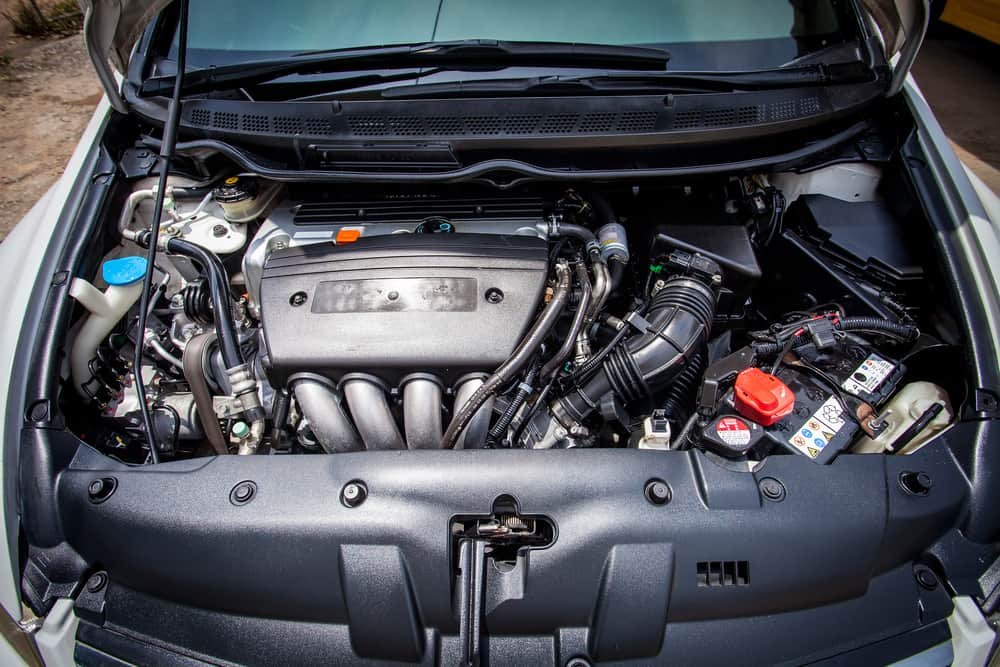COMMON CAR PARTS
RADIATOR:
The radiator is a heat exchanger used to remove heat from the coolant in the cooling system to prevent your vehicle’s engine from overheating. Hot coolant is routed through the radiator, where the coolant can exchange heat with the passing air.
AC COMPRESSOR:
The AC Compressor is responsible for pumping coolant throughout your system and starting the process of cooling your car. Without it, the AC system will not work. Summer heats show that your vehicle’s AC system is essential.
BATTERY:
The battery stores energy in chemical form so it can be released as electricity to run your vehicle’s electrical components. Other terms you may run into when talking about a car battery are:
- Battery Terminal: A means of connecting the battery to the vehicle’s electrical system. The three types of battery terminals are post or top, side, and L.
- Battery Capacity: The energy output of a battery measured in amp/hours.
- Cold Cranking Amps: Abbreviated CCA, this refers to the amount of current that the battery can supply to the vehicle.
- AGM: This stands for absorbent glass mat, a design in which sulfuric acid is absorbed by a fiberglass mat, making the battery spill-proof and better at holding a charge.
AXLE:
The front and rear axles are cross members supporting a vehicle where the wheel hubs are attached. Axles are also part of your suspension system and are responsible for sending power to the wheels from the engine through the transmission and differential. They link the wheels to the vehicle and support the weight of each.
BRAKES:
A car’s brake system is used to stop or slow a vehicle and/or prevent it from moving when stopped or parked. The two most common systems are disc brakes and drum brake systems. Some of the most common disc brake parts include:
- Caliper: Non-rotational components of disc brakes that straddle the disc and contain hydraulic components forcing the brake pads against the rotor to slow or stop the vehicle. Can be found in the front or rear of a vehicle.
- Brake Pad: The pad of friction material that is pressed against the disc by the caliper, to slow or stop a vehicle. It is also a term often used for brake lining.
- Brake Rotor: Disc-shaped component that revolves with hub and wheel. The lining pads are forced against the rotor to provide a friction surface for the brake system, to slow or stop a vehicle.
SHOCK ABSORBERS (SHOCKS AND STRUTS):
Shock Absorbers are a hydraulic device used at each wheel of the suspension system to help control the up, down, and rolling motion of a car body by dampening the oscillations or jounce of the springs when the car goes over bumps, thereby contributing to vehicle safety and passenger comfort. Also referred to as a shock or strut, depending on which the vehicle is equipped with.
A typical shock absorber has three functions:
- Dampen the effect of spring oscillation in order to control the ride stabilization of a vehicle
- Control body sway
- Reduce the tendency of a tire tread to lift off the road surface (a problem often caused by static unbalance)
MUFFLER:
The muffler comes just before the end of the exhaust pipe and is responsible for reducing the noise emitted by the exhaust system. It restricts exhaust gas flow, which leads to a quieter ride. Some mufflers restrict gas flow more or less, which results in quieter or louder exhaust noise respectively.
TAILPIPE:
The tailpipe is the pipe that carries exhaust fumes from the muffler or catalytic converter to the rear of the vehicle.
FUEL TANK
A storage tank for gasoline that powers your vehicle.
For more details send a WhatsApp message or call our customer care @ 0507979225
NB: All of our staff are vaccinated and strictly follow all covid-19 Protocols




